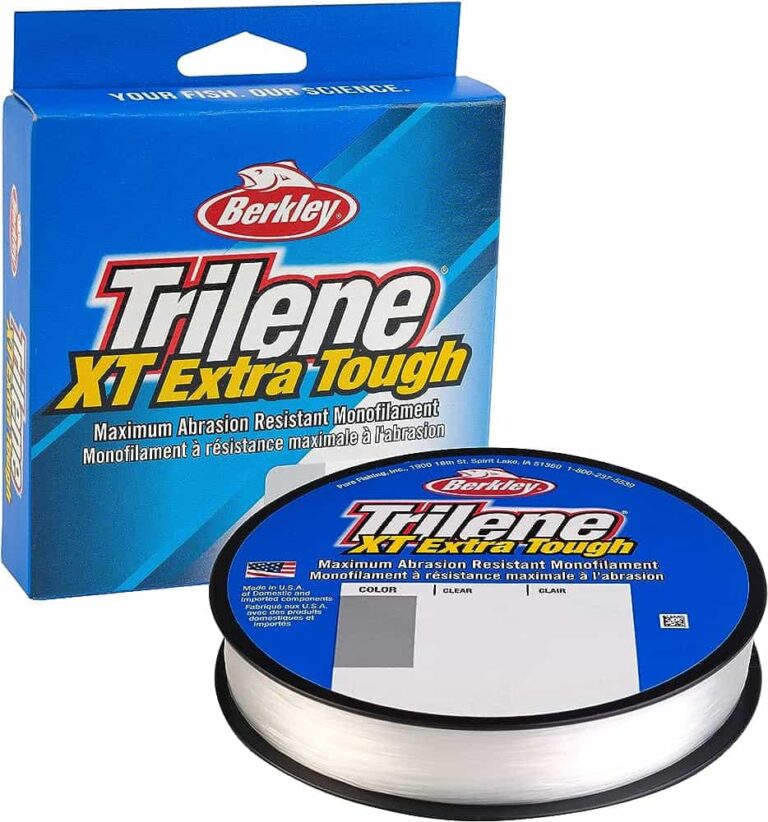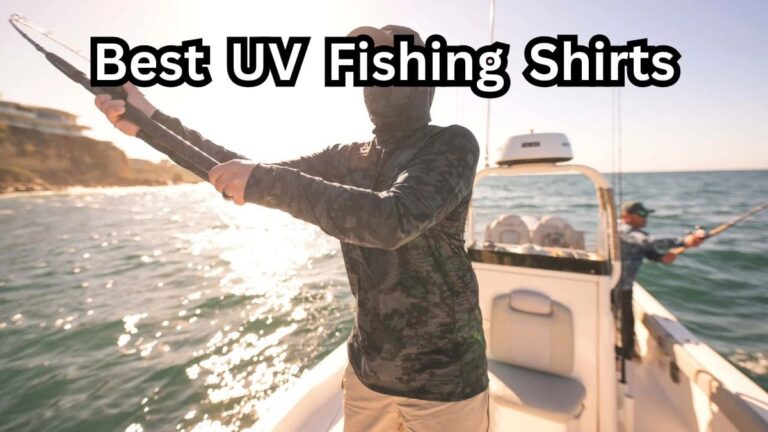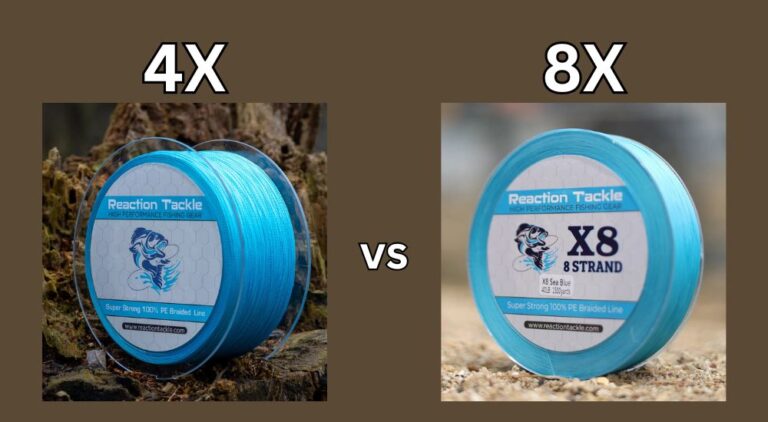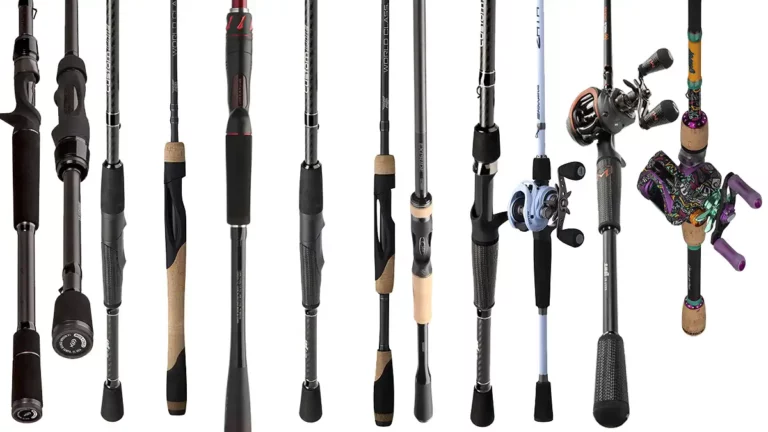What is CoPolymer Fishing Line? And What Are the Benefits?

For the longest time, monofilament, fluorocarbon, and braid have been the only fishing lines available.
But there is actually another option, and it might surprise you how good it is.
I am talking about CoPolymer fishing line, and you are going to want to read the rest of this article.
What is CoPolymer Fishing Line?

Copolymer fishing line is a hybrid fishing line. It is made my taking either one or two strands of nylon and coating those in a layer of fluorocarbon.
So essentially, copolymer line is monofilament line coated in fluorocarbon.
The idea behind copolymer is that it takes some of the benefits from all three other types of fishing lines to make an all purpose and versatile option.
Benefits of CoPolymer Fishing Line
Less Stretch
Because of the fluorocarbon coating, CoPolymer line has a lot less stretch than classic monofilament.
The stretch CoPolymer is about half way between mono and fluoro.
With mono having about a 18-20% stretch and fluoro having about a 8-10% stretch.
The advantage of this is that you can get better hook sets, especially on long casts.
The high level of stretch is the main reason people don’t use monofilament very much these days.
But CoPolymer has a lot less, which allows you to use heavier duty lures and still get solid hook sets.
More Buoyant
On the flip side, the main downside of fluorocarbon is that it sinks very fast.
This makes it very difficult to fish topwater lures. The sinking fluorocarbon will tend to pull down on your lures and make them harder to use and less effective.
But CoPolymer is much more buoyant than fluorocarbon. Now it doesn’t truly float.
Because CoPolymer has a coating of fluorocarbon, it will have some tendency to sink very slightly and slowly.
However, you can still fish topwater lures very effectively because the CoPolymer line doesn’t overpower your lure to the point that it effects it’s usability.
Abrasion Resistance (Durability)
Out of the three main fishing lines, monofilament is the most durable.
With the monofilament center, CoPolymer fishing line is much more durable and abrasion resistant than both fluorocarbon and braided fishing line.
This durability allows you to fish around rocks, trees, docks, and other cover without weakening your line and breaking off.
Low Visibility
Fluorocarbon has the least amount of visibility of all the fishing lines.
The fluorocarbon material allows light to pass right through it rather than absorbing the light and making it bounce around the interior of the line.
This makes the fluorocarbon material blend into the water and make it virtually invisible.
Because of the fluorocarbon coating on the outside of the CoPolymer line, it is much less visible than monofilament and obviously braided line.
Now it isn’t quite as invisible as 100% fluoro, but the CoPolymer is still almost impossible to see in the water.
Thinner Diameter
CoPolymer line has the added strength of 2-3 individual strands wrapped and coated around each other.
Similarly to braided line, this allows CoPolymer to have thinner diameter compared to its strength.
This thin diameter allows you to cast further, add more line to your spool, reduces line memory, and decrease line visibility further.
Braided line is still going to be by far the thinnest fishing line, but CoPolymer is thinner than monofilament and fluorocarbon.
Low Price
If you have ever bought or shopped for braided and fluorocarbon lines, you already know that they are very, very expensive.
You will usually have to pay around $30 for around 150 yards of braid or fluoro.
And those prices go even higher if you are getting heavier pound test line. But CoPolymer is extremely cheap.
I mean it is truly dirt cheap. You can get hundreds of yards of line for under $10.
And if a fishing context, that is virtually free.
The price tag is probably the best and most important factor when it comes to getting CoPolymer lines.
You will save hundreds of dollars a year if you spool up a couple spools with this stuff.
Why Is CoPolymer Not More Popular?
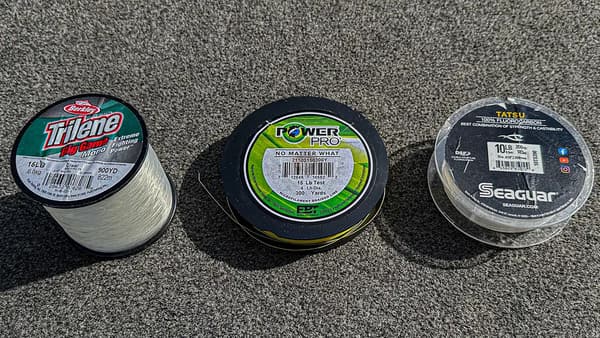
At this point, you are probably wondering, “Why doesn’t everyone use and talk about CoPolymer fishing line?”.
Well, the reason is that CoPolymer is an all purpose type of line. It doesn’t exactly specialize in any one fishing technique or situation.
It doesn’t maximize any one aspect of fishing lines. And if you have noticed, this fishing industry and influencers are all about very specific optimization.
Every lure, color, rod, reel, and line has one specific purpose that it is used for.
So in the competitive fishing industry, CoPolymer line doesn’t optimize for any one style of fishing.
So pro anglers and influencers are plenty willing to spend top dollar for specialized braided and fluorocarbon lines.
But CoPolymer is perfect for weekend anglers or those who don’t want to spend tons of money to spool up one reel.
FAQ
What Is CoPolymer Fishing Line Good For?
Simply put, CoPolymer fishing line is good for everything. But it is not great or perfect for anything.
CoPolymer is kind of the, “Jack of all trades is a Master of None”, type of situation.
It has a little bit of the benefits from monofilament, fluorocarbon, and braid. But it also has a little bit of the weaknesses of those lines.
Does CoPolymer Line Stretch?
Yes, CoPolymer line does stretch, but not very much.
CoPolymer stretches much less than monofilament, but a bit more than fluorocarbon.
On average, it has about 12-14% stretch.
Is CoPolymer Line Invisible?
CoPolymer line is not completely invisible, but is much less visible than both monofilament and braided lines.
Only fluorocarbon is less visible. Unless you are fishing ultra clear water, CoPolymer line has plenty of invisibility.
Is CoPolymer Line Better than Fluorocarbon?
Well, it depends on how you look at it. CoPolymer is a much better all around fishing line.
It is much more versatile, and certainly much cheaper.
But if you are fishing very clear water or thick wire, single hook lures, fluorocarbon is going to be a better option (if you are willing to pay the high price).
Reeling this In
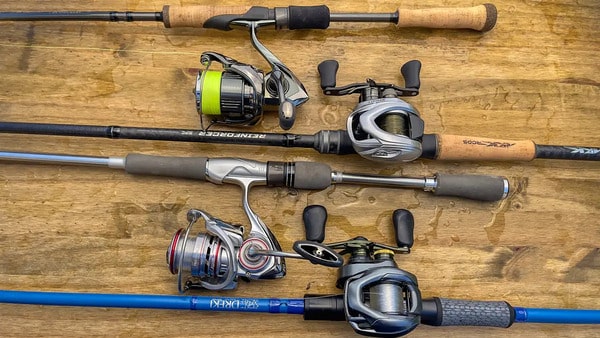
CoPolymer fishing line is a versatile and cost-effective option that combines the benefits of monofilament, fluorocarbon, and braided lines.
Its reduced stretch, increased buoyancy, enhanced abrasion resistance, low visibility, and thinner diameter make it a reliable choice for a wide range of fishing scenarios.
While it may not specialize in any particular technique, its affordability and well-rounded performance make it an excellent choice for recreational anglers and those seeking an economical alternative to more expensive lines.
Ultimately, copolymer fishing line offers a balanced solution for everyday fishing needs without the hefty price tag of specialized lines, and you should consider spooling it up on your reels.



